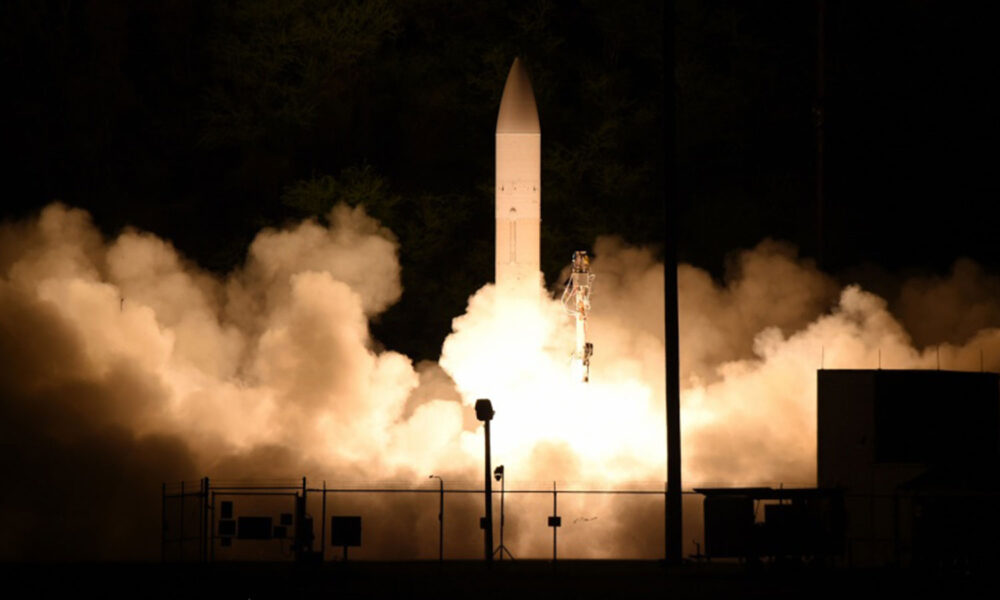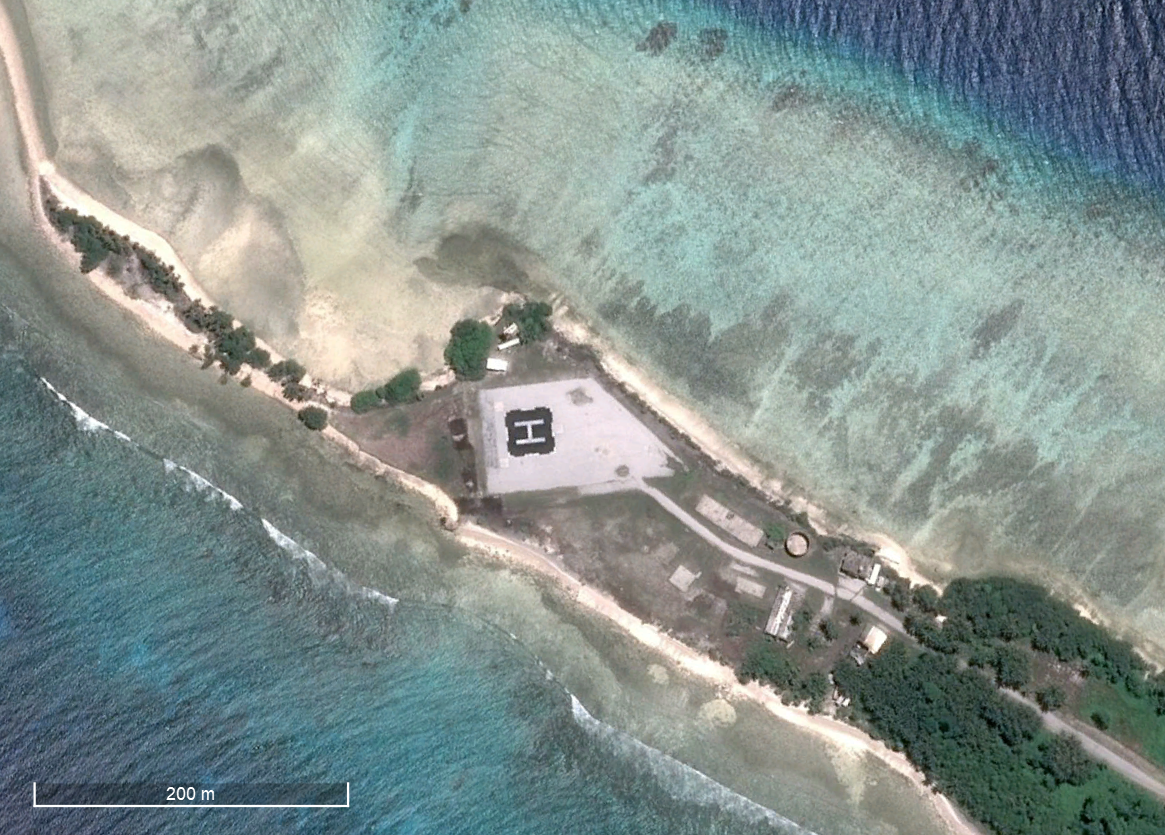The United States Department of Defense has been actively developing hypersonic weapons—missiles that fly through the atmosphere at more than five times the speed of sound—since the early 2000s. Ongoing programs are scattered throughout the Department, including the Air Force’s Air-launched Rapid Response Weapon (ARRW), the Army’s Long-Range Hypersonic Weapon (LRHW), and the Navy’s Intermediate Range Conventional Prompt Strike Weapon (IRCPS).
These Army and Navy programs are a joint endeavor, sharing the same conical glide vehicle (the unpowered portion of the missile that detaches from its rocket booster shortly after launch and glides the rest of the way to the target). In March, the Department of Defense announced that it had conducted a test flight of this Common Hypersonic Glide Body (C-HGB), adding to a fast-growing US hypersonic test record.
As the US hypersonic test record grows, a clearer picture of just what role these weapons might play in US strategy is emerging.
Test conditions
On March 19, 2020, the Navy Strategic Systems Programs (SSP) conducted a test flight of the C-HGB, starting from the Pacific Missile Range Facility, Barking Sands, located on the western coast of Kauai, Hawaii. The hypersonic glide vehicle was mounted on a 3-stage Strategic Target System (STARS) rocket, a modified version of the Navy’s discontinued Polaris missile. The assembled missile was then launched from a dedicated STARS launch pad located near the northern edge of the Pacific Missile Range Facility.
Figure 1: The STARS launch pad at the Pacific Missile Range Facility from which this test was conducted. Google Earth.
Two ocean navigation warnings issued prior to the test, meant to alert seafaring vessels of airborne hazards within the test area, indicate a gently curving flight path extending southwest of the launch site. This matches the flight path proposed last year in the Navy’s environmental assessment of the test.
Figure 2: the area between the Pacific Missile Range Facility and Kwajalein Atoll covered by two navigation warnings issued prior to the test. Google Earth.
After launch, the missile flew to Kwajalein Atoll in the Marshall Islands, a part of the Ronald Reagan Ballistic Missile Defense Test Site. Based on an environmental assessment of the test published by the Navy in late 2019, the glide vehicle likely struck the northwest end of Illeginni Islet. While the Navy preferred a ground impact at this location, splashdown in the ocean within roughly 40 km of the islet was also identified as a possibility.
Figure 3: the likely impact point of the C-HGB at the northern end of Illeginni Islet. Google Earth.
This impact point is located about 3780 km from the Pacific Missile Range Facility launch pad where the test flight began. Judging from the exclusion zone delineated by the maritime navigation warnings, shown in Figure 2, after detaching from its rocket booster the C-HGB took advantage of aerodynamic forces to execute a minor cross-range maneuver, turning during flight to impact a few hundred kilometers south of where it otherwise would have struck. Accounting for this curving flight path, the missile probably flew about 4000 km in total. This is half of the 8000 km maximum range proposed early in the weapon’s development.
Ultimately, the Department of Defense touted the test as a success that validated the missile’s design.
Prior testing
The C-HGB is an extension of the Army’s Advanced Hypersonic Weapon (AHW) project, a similar experimental boost-glide vehicle. This precursor weapon was tested several times, always on the front of the STARS rocket used in the most recent test.
The first flight, a 2011 test also from the Pacific Missile Range Facility to Kwajalein Atoll, sent the missile about 4000 km. A 2014 follow-up, meant to demonstrate a longer 6000 km flight from the Kodiak Launch Complex in southern Alaska to Kwajalein Atoll, failed just seconds after launch. In 2017, the AHW glider was rescaled to fit onto a submarine-launched missile, yielding the current C-HGB. This system was successfully tested in 2017, again between the Pacific Missile Range Facility and Kwajalein Atoll.
Due to failure of the 2014 test, all completed test flights of the C-HGB, and of its precursor AHW, have followed similar 4000 km flight paths between Hawaii and the Marshall Islands.
Future developments
Building on this modest test record, the Navy plans to develop the C-HGB into a submarine-launched missile, with the vehicle mounted on a 34.5 inch, 2-stage solid fuel rocket. This weapon will prospectively be deployed on Virginia-class submarines by 2028. The Army plans to begin fielding its adaptation of the C-HGB, a truck-launched missile, in 2023.
With this most recent test flight, these plans have come one step closer to fruition. Still, the US hypersonic test record remains spotty, particularly when it comes to long-range flight. While several intermediate-range tests between Hawaii and the Marshall Islands have succeeded, multiple longer-range attempts have not. These failures include not only the abovementioned 2014 test of the AHW, but also two earlier tests of the Hypersonic Test Vehicle 2 (HTV-2), a more advanced wedge-shaped glider design from which the Air Force’s ARRW is derived. This system, meant to travel up to 17000 km with up to 3000 km of cross-range maneuverability, did not manage to complete a single successful test flight before its development was halted.
Many of the challenges of hypersonic flight, such as the cumulative effects of extreme aerodynamic heating as glide vehicles speed through the atmosphere, become increasingly intractable as range and flight time increase. With long-range performance proving elusive, the Pentagon has shifted the official focus of its hypersonic program from “prompt global strike” to mere “prompt strike,” alongside an emphasis on vehicles with more modest ranges.
Still, with only a handful of flight tests performed to date, the ultimate trajectory of US hypersonic development remains to be seen. The failure of long-range tests to date could be nothing more than a statistical fluke; the failure of the AHW’s attempted 6000 km flight in 2014 was attributed to the launch vehicle, rather than the hypersonic glider itself. With several hypersonic tests planned over the next few years (two of the C-HGB and four of the ARRW), more data will soon become available.
Image caption: On March 1, 1954 the US tested a nuclear weapon 1,000 times more powerful than the bomb that destroyed Hiroshima. The blast from the Castle Bravo test over the Bikini Atoll in the Marshall Islands rained down over a 7,000 square mile area.
The featured image in this blog is courtesy of the Oscar Sosa/Navy.




